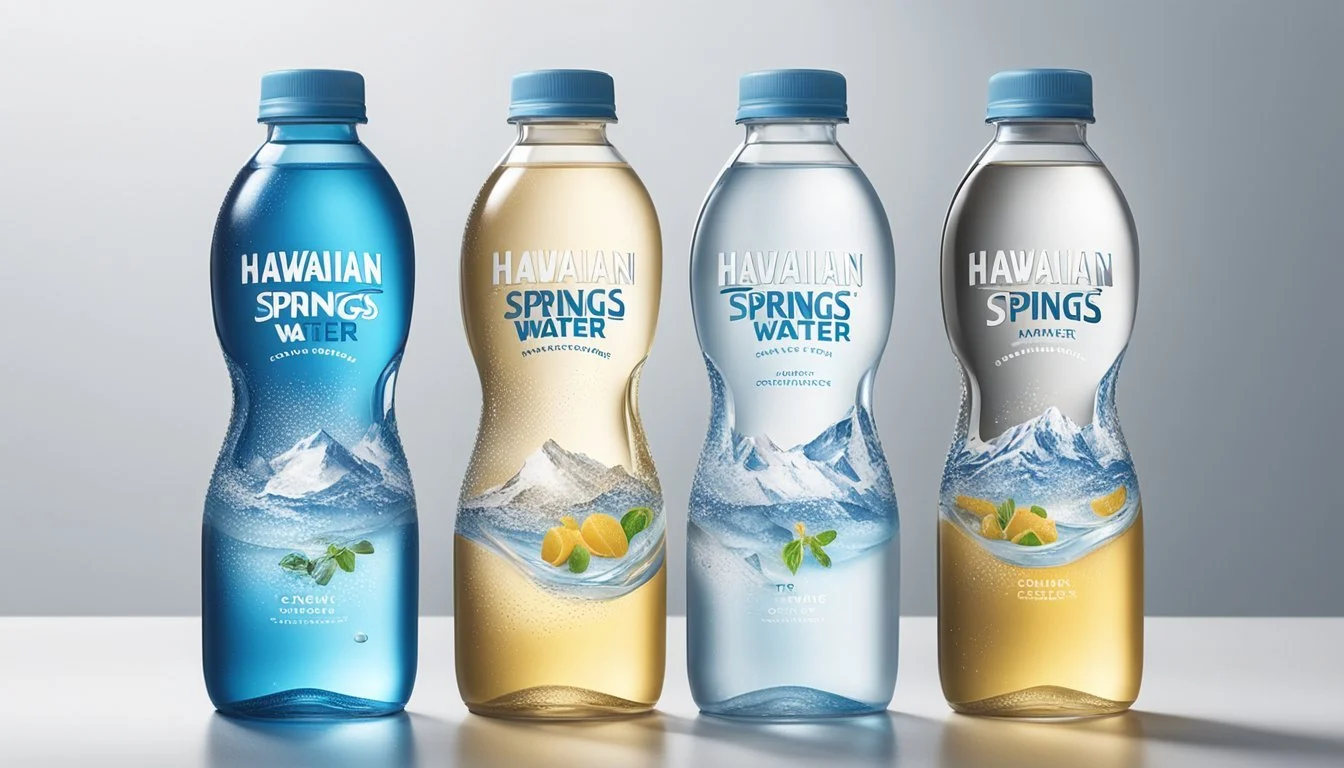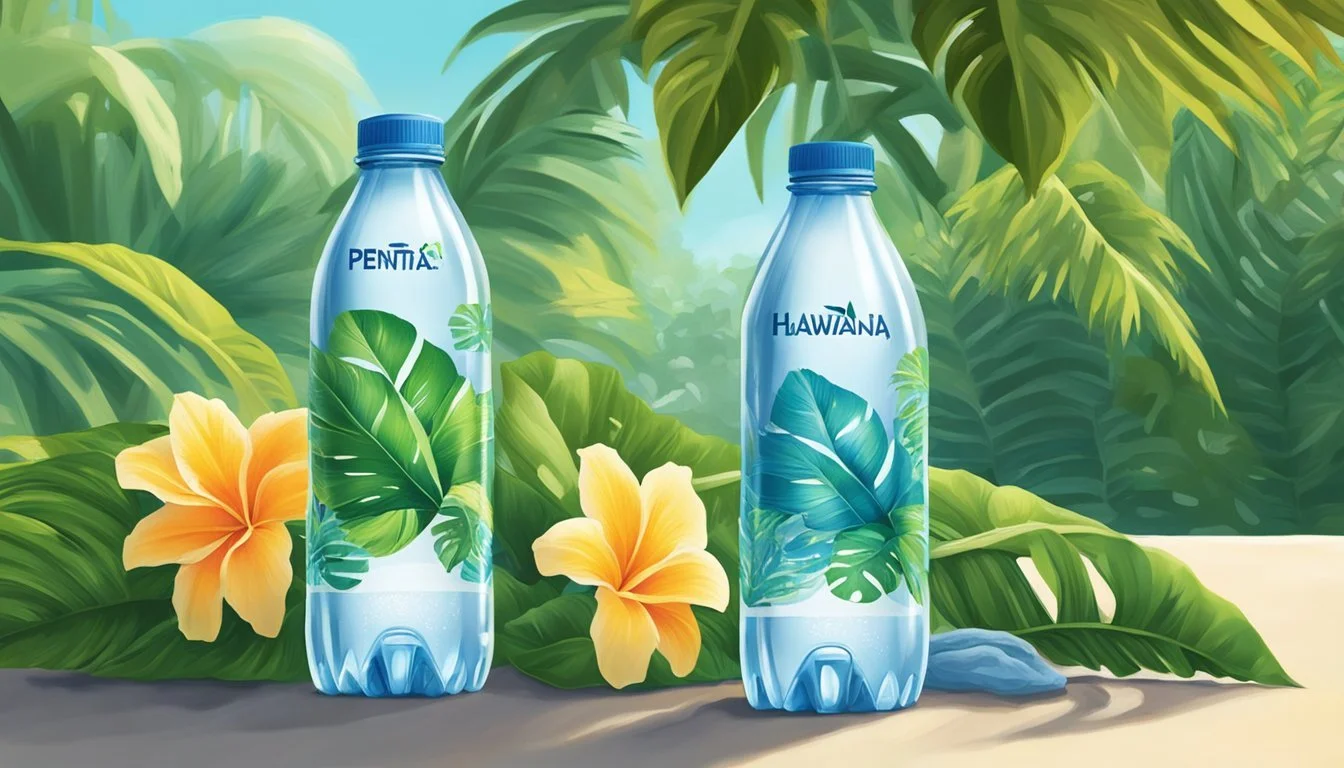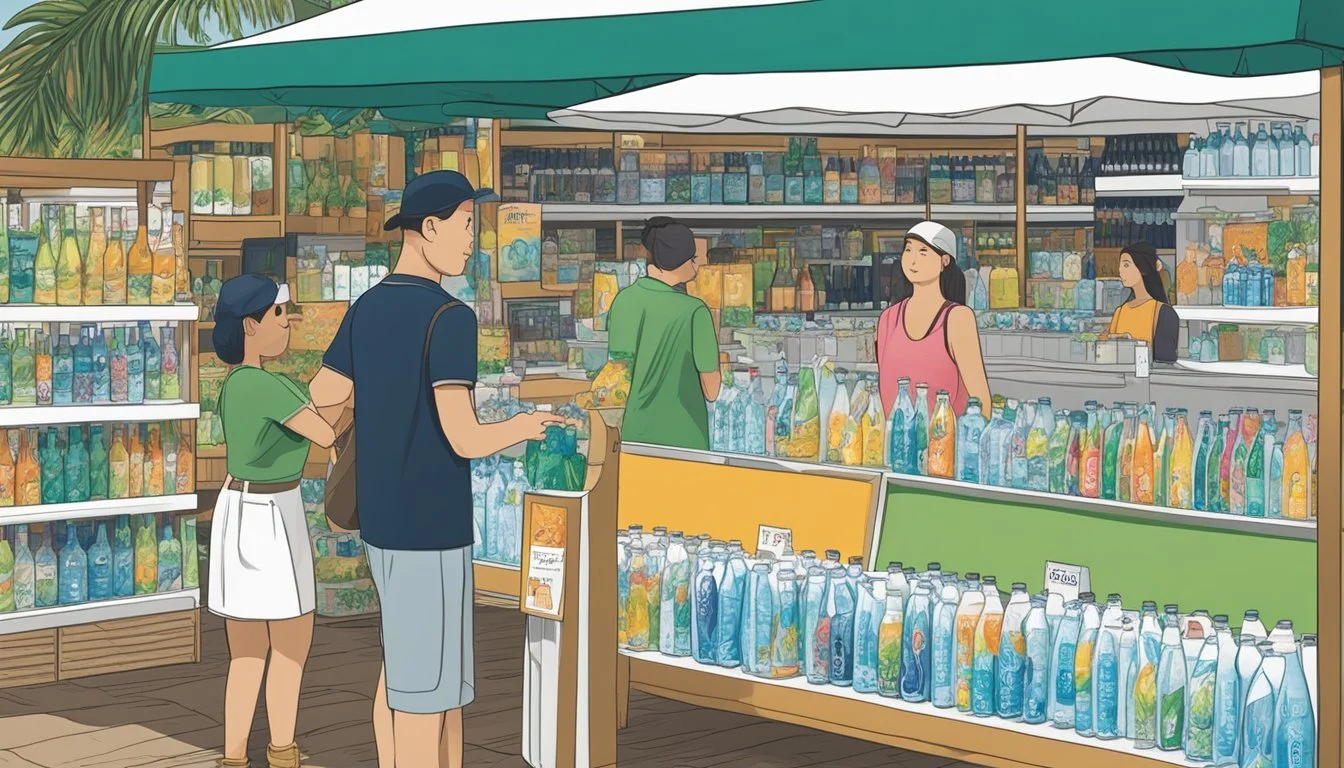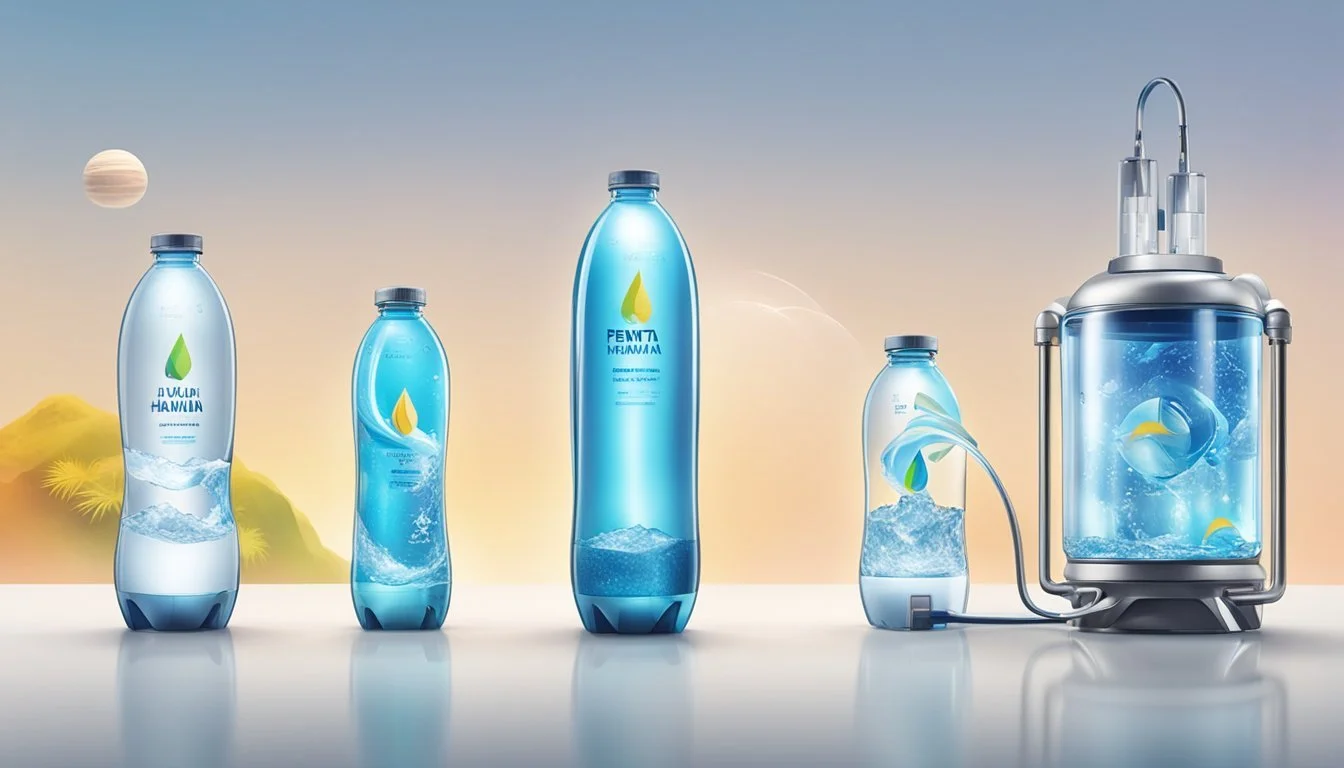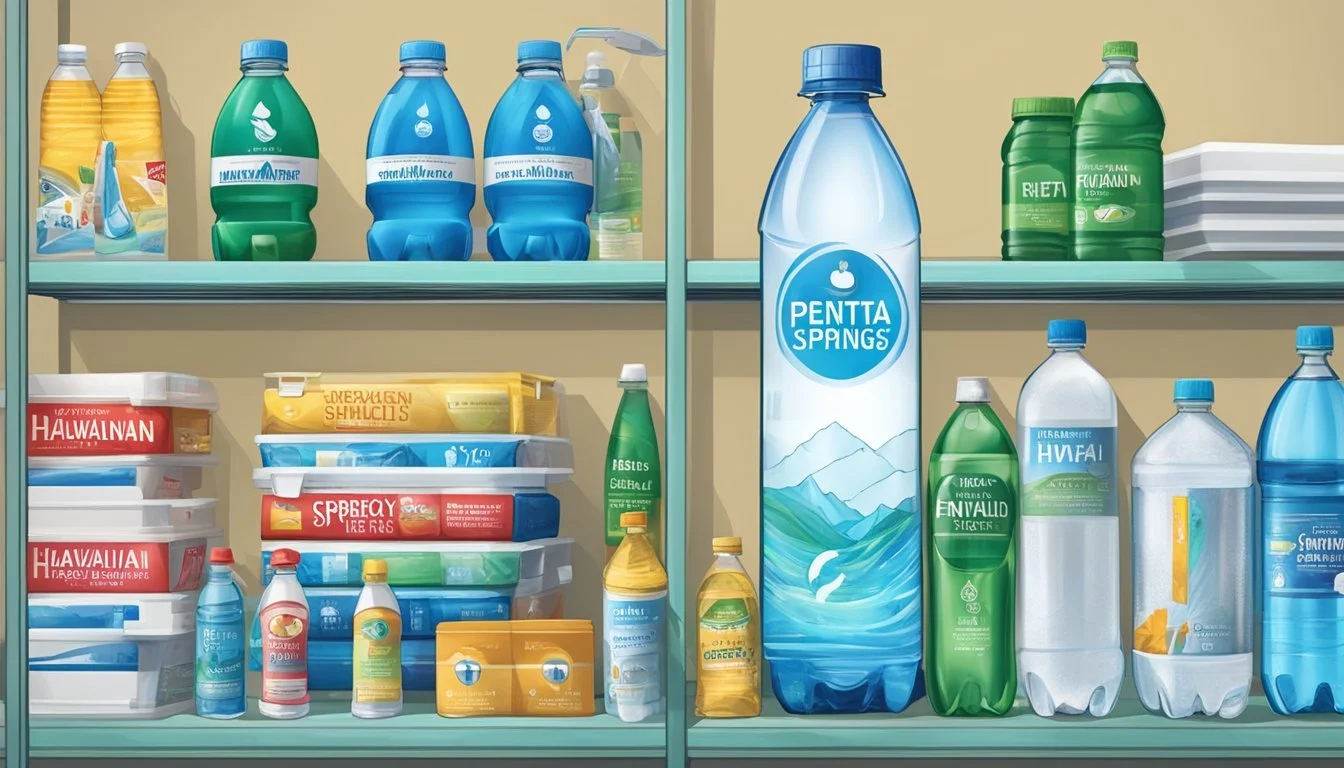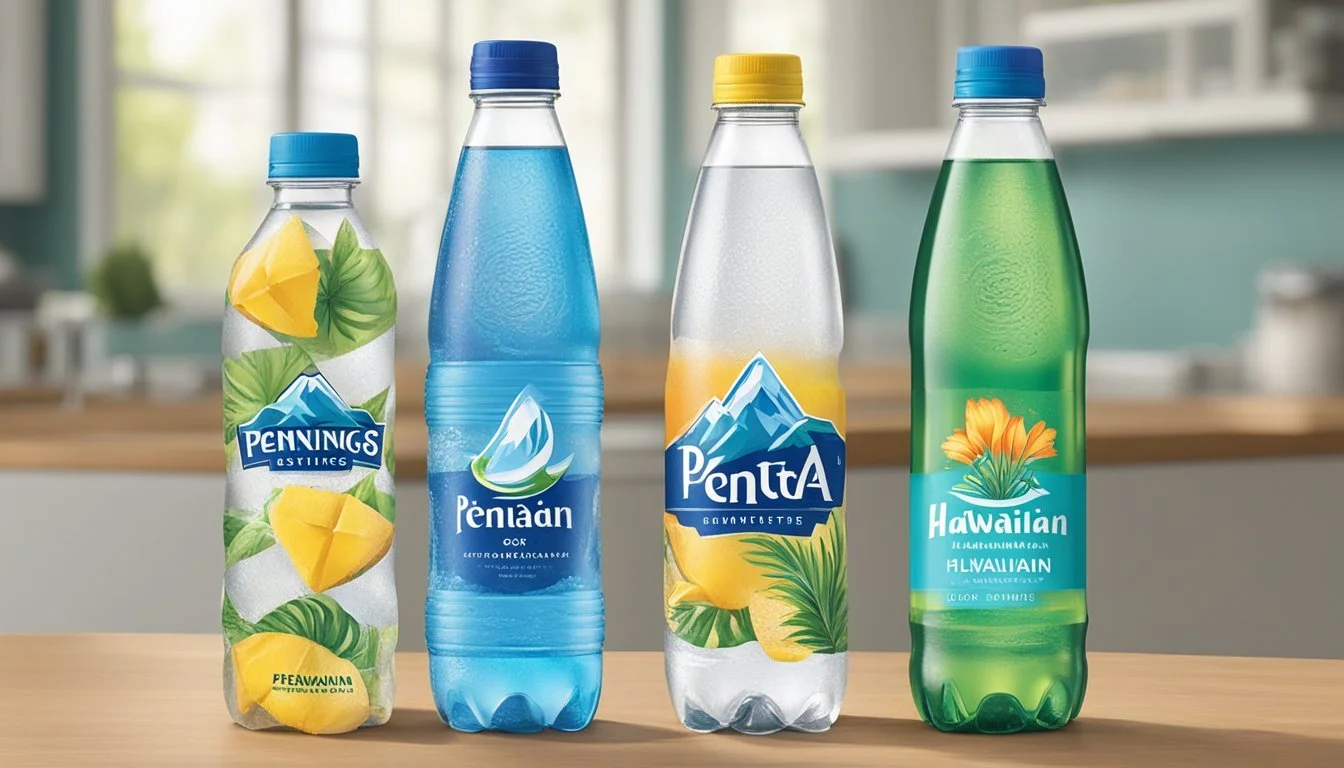Penta vs. Hawaiian Springs
Which Bottled Water is Better for You?
Choosing the right bottled water can be daunting, especially with so many options available. In the case of Penta and Hawaiian Springs, each brand has unique qualities that set them apart. Penta water stands out for its ultra-purification process, which removes impurities and ensures a clean taste. On the other hand, Hawaiian Springs prides itself on being sourced from natural aquifers in Hawaii, offering a refreshing taste with a hint of natural minerals.
Penta’s rigorous filtration process appeals to individuals looking for pure hydration, free from contaminants. It’s an excellent choice for health-conscious consumers who prioritize purity. Hawaiian Springs, with its unique origin, provides a different appeal. Sourced from the pristine environments of Hawaii, it carries a distinct flavor profile enriched by minerals naturally found in volcanic rock.
Ultimately, the choice between Penta and Hawaiian Springs depends on your preferences for purity or natural mineral content. Penta delivers exceptional purity, while Hawaiian Springs offers a taste infused with the essence of its volcanic Hawaiian source. By understanding the strengths of each brand, one can make an informed decision about which bottled water best meets their needs.
The Rise of Bottled Water
Bottled water has become a staple in the lives of many consumers. Growing demand for convenience has driven its popularity, making it readily available in grocery stores and vending machines. This surge is not just a local phenomenon; it's a global trend.
Consumers appreciate the ease of carrying a bottle and the assurance of quality and safety. Major brands like Coca-Cola and Nestlé have capitalized on this, offering a variety of options to meet diverse preferences.
According to the United Nations, clean drinking water is a critical issue. In areas where tap water may not be reliable, bottled water provides a secure alternative. This has further spurred demand in both developed and developing countries.
Key Factors for Growth in Bottled Water:
Convenience: Easy to carry and always accessible.
Safety: Perceived as cleaner and safer than tap water.
Taste: Preferred by many for its taste and purity.
Availability: Found in almost all grocery stores worldwide.
As this demand continues to rise, the market sees an influx of new brands and products. From basic purified water to premium spring water, there's a bottle for every need.
Many companies now offer eco-friendly packaging to address environmental concerns, showing the industry's adaptability and responsiveness.
This booming sector reflects a simple truth: people value convenience and quality, making bottled water a significant part of modern life.
Understanding Water Quality and Safety Standards
The safety of bottled water is governed by stringent regulations and testing to ensure it meets specific standards. This section breaks down how bottled water is regulated, tested for contaminants, and how companies report this information to consumers.
EPA and FDA Regulations
In the United States, the Environmental Protection Agency (EPA) regulates public drinking water, whereas the Food and Drug Administration (FDA) oversees bottled water. The FDA's standards are generally similar to those of the EPA with stricter limits on lead, ensuring bottled water safety. Both agencies set maximum contaminant levels for various substances like bacteria, chemicals, and minerals.
The key difference lies in enforcement. Public water supplies are regularly monitored and supported by detailed infrastructure, while bottled water companies must adhere to manufacturing practices to ensure compliance. Frequent inspections and penalties for non-compliance help maintain high standards.
Testing for Contaminants
Bottled water undergoes rigorous testing to identify potential contaminants. Companies test for a wide range of substances, including microorganisms, heavy metals, and chemical pollutants. These tests are typically conducted by certified laboratories and are in accordance with FDA requirements.
A major focus is on toxins like PFAS (per- and polyfluoroalkyl substances), which have raised health concerns. Results from these tests are often compared against both FDA and state-specific guidelines. Companies that exceed contaminant levels must take corrective actions to mitigate health risks.
Quality Reports and Consumer Transparency
Consumer transparency is key for bottled water companies. Many brands publish annual quality reports or make them available upon request. These reports, often in PDF format, detail the water's source, treatment methods, and contaminant levels.
Consumers can find this information on company websites or product labels. Brands like Consumer Reports highlight the importance of these disclosures, with some products found to contain higher levels of certain chemicals. Clear and accessible reporting helps consumers make informed choices regarding their water consumption.
Comparing Penta and Hawaiian Springs
Penta and Hawaiian Springs bottled waters differ in origin, filtration methods, mineral content, health benefits, and taste. Understanding these differences can help you make an informed choice.
Origin and Source
Penta originates in the United States. It is sourced from natural springs, then undergoes an extensive purification process.
Hawaiian Springs is sourced from the Big Island of Hawaii. This water comes from rainwater filtered through volcanic rock, giving it a unique mineral profile.
These differing origins contribute significantly to their distinct characteristics.
Filtration and Purification
Penta undergoes a rigorous 13-step purification process that takes 11 hours. This process removes impurities and creates ultra-pure water.
Hawaiian Springs, on the other hand, relies on the natural filtration of volcanic rock. This method preserves minerals while still providing clean water.
Penta's extensive filtration contrasts sharply with Hawaiian Springs’ natural approach.
Mineral Content and Health Benefits
Penta’s intensive purification strips out most minerals. It aims to provide water that is as pure as possible.
Hawaiian Springs retains more natural minerals due to its unique filtration. These minerals include calcium, magnesium, and silica, which offer health benefits such as improved hydration and skin health.
The mineral content of Hawaiian Springs may appeal to those looking for additional health benefits.
Taste Profile and Water Sommelier Insights
Penta has a taste that is often described as clean and neutral, similar to tap water, due to the high level of purification.
Hawaiian Springs, praised for its slight sweetness and smooth texture, reflects its volcanic origin. Water sommeliers note the velvety mouthfeel and subtle flavor.
The distinct taste profiles cater to different preferences, with Penta being more neutral and Hawaiian Springs offering a hint of natural sweetness.
Environmental Concerns and Sustainability
Understanding the environmental impact of bottled water brands is crucial. This section examines the implications of plastic bottles, explores packaging alternatives, evaluates aquifer and groundwater impacts, and reviews company sustainability practices.
Plastic Bottles and Recycling
Both Penta and Hawaiian Springs utilize plastic bottles, contributing to plastic waste. Plastic bottles often end up in landfills or the ocean, taking hundreds of years to decompose. Recycling rates vary by region, but globally, less than 10% of plastic is recycled.
Additionally, producing plastic bottles requires significant energy and resources. The process involves extracting petroleum, refining it, and manufacturing the plastic. This contributes to greenhouse gas emissions and environmental degradation. Increasing consumer awareness about proper recycling and the environmental costs of plastic can help mitigate these issues.
Environmentally Friendly Packaging Alternatives
Companies are exploring alternatives like boxed water and biodegradable materials. Boxed water, made from paperboard, is a more sustainable option. Hawaiian Springs has begun introducing more eco-friendly packaging, including biodegradable bottles.
Penta has also made strides by using recycled plastic for its bottles, reducing the need for new plastic production. Both companies are considering materials such as plant-based plastics and glass. These options have a significantly smaller environmental footprint and promote sustainability.
Aquifer and Groundwater Impact
Bottled water companies often source from aquifers, impacting local groundwater levels. Hawaiian Springs sources its water from Hawaiian aquifers, which are naturally replenished by rain. This sustainable practice ensures minimal harm to the environment.
Penta sources from artesian wells with careful monitoring to avoid over-extraction. The balance between extraction and natural replenishment is key. Overuse of aquifers can lead to depletion, affecting local ecosystems and water availability for communities.
Company Sustainability Practices
Sustainability practices vary between companies. Hawaiian Springs has initiatives focusing on renewable energy and reducing carbon emissions. They use energy-efficient bottling processes and minimize waste.
Penta also emphasizes sustainability through energy-efficient facilities and reducing their carbon footprint. They have made efforts to use renewable energy sources and implement water-saving technologies. Both companies are part of industry initiatives promoting sustainability, indicating a commitment to environmental responsibility.
Market Presence and Consumer Perception
Penta and Hawaiian Springs are two prominent bottled water brands with distinct approaches to branding, consumer trust, market share, and pricing. This section will cover how these aspects impact their market presence and consumer perceptions.
Branding and Marketing Strategies
Penta focuses on purity and wellness in its marketing. Their branding emphasizes that the water undergoes a unique purification process, resulting in ultra-pure water free from contaminants. Their marketing materials often highlight the scientific aspects behind this process, aiming to appeal to health-conscious consumers.
Hawaiian Springs, on the other hand, capitalizes on the exotic and natural image of Hawaii. Their branding often showcases pristine Hawaiian landscapes and emphasizes the natural sourcing from a sustainable aquifer in Hawaii. They aim to convey a message of natural purity and environmental responsibility.
Consumer Trust and Loyalty
Consumers generally trust Penta for its stringent purification process. The brand's focus on health and wellness resonates well with those concerned about contaminants in their drinking water. Those who prioritize clean, pure water tend to remain loyal to Penta, trusting in both the product quality and the brand's health-centric ethos.
Hawaiian Springs builds its consumer loyalty through its natural and eco-friendly image. Shoppers who are passionate about sustainability and natural products often gravitate toward Hawaiian Springs. The brand’s commitment to portraying an authentic Hawaiian experience strengthens consumer trust, especially among people who value natural sourcing and environmental conservation.
Market Share and Availability
Penta has a robust market presence primarily in North America. It is commonly found in health food stores, specialty grocery stores, and select major retailers. Penta’s market share reflects its niche appeal to the wellness market.
Hawaiian Springs enjoys widespread availability both domestically and internationally, leveraging the allure of Hawaiian imagery. The brand is frequently seen in gourmet shops, Whole Foods, and various supermarkets. Its international reach showcases its broader market appeal compared to the more niche-focused Penta.
Comparative Cost Analysis
Penta is positioned as a premium product, with its prices reflecting the extensive purification process it undergoes. Consumers are willing to pay a higher cost for the perceived health benefits and purity it offers.
Hawaiian Springs also occupies a higher price point, though its costs are tied more to the brand’s natural and exotic appeal rather than complex filtration processes. The price reflects the value consumers place on its natural origin and the shipping from Hawaii.
Both brands have carved out unique niches with distinct price points catering to their respective target demographics. The pricing strategies align closely with their brand identities and consumer expectations.
Unique Properties and Technological Advancements
Both Penta and Hawaiian Springs offer distinct properties that make them unique in the bottled water market. Penta utilizes cutting-edge filtration technology, while Hawaiian Springs boasts natural attributes derived from its volcanic source.
Hydro-7 and Other Filtration Innovations
Penta employs a patented filtration process known as Hydro-7. This method involves reverse osmosis, allowing it to remove impurities at a microscopic level. The result is an exceptionally pure water free of dissolved solids and contaminants.
In addition to reverse osmosis, Penta's process also includes additional steps like diatomaceous earth filtering and UV light disinfection. These measures ensure the final product remains pure and free of microbes. The advanced technology used by Penta sets it apart from standard bottled water brands, reflecting a commitment to delivering high-quality hydration.
Electrolyte-Enhanced and pH Levels
Hawaiian Springs water is known for its naturally occurring minerals and electrolytes, derived from its volcanic source. The water typically has a pH level of 7.6 to 8.2, making it slightly alkaline. This alkaline nature can help balance the body's pH levels, which some consumers find beneficial for overall health.
The mineral composition includes magnesium, calcium, and potassium, enhancing both the taste and the hydration qualities of the water. Unlike Penta, which focuses on extreme purity, Hawaiian Springs emphasizes its natural electrolyte content and mineral balance. This positions the brand as a premium option for those seeking not just refreshment but added health benefits.
By offering such distinctions, both Penta and Hawaiian Springs cater to different consumer needs, establishing a definitive presence in the competitive landscape of bottled water.
The Role of Bottled Water in Emergency Preparedness
Bottled water plays a critical role in emergency preparedness. During natural disasters, such as hurricanes or earthquakes, tap water can become unsafe to drink. This is particularly relevant in states like California and Texas, which are prone to such events.
Having an emergency supply of bottled water ensures that clean drinking water is available when the usual supply is compromised. Authorities often distribute large quantities of bottled water to affected communities, providing immediate relief.
Emergency guidelines generally recommend storing a gallon of water per person per day. This means a family of four should have at least 12 gallons for a three-day period.
The International Bottled Water Association highlights that bottled water is always ready and accessible during these challenging times. The industry has consistently responded to the need for clean water in the aftermath of disasters.
It's not just government agencies that recognize this importance. Many households include bottled water in their emergency kits, along with other essentials. This proactive approach can make a significant difference in times of emergency.
In essence, bottled water is a reliable backup. Whether it's for drinking, cooking, or sanitation, having this resource readily available can alleviate some of the immediate stresses during a crisis. Having a sufficient supply is a practical and necessary step for any emergency preparedness plan.
Conclusion
In comparing Penta and Hawaiian Springs, it is essential to consider several factors.
Purity and Source:
Penta: Known for its advanced purification process and ultra-purity.
Hawaiian Springs: Sourced from a volcanic well in Hawaii, renowned for its natural alkaline properties.
Taste and Composition:
Penta offers a clean, crisp taste due to its meticulous filtration process.
Hawaiian Springs has a unique mineral composition, providing a slightly alkaline taste.
Consumer Preferences:
Penta often preferred by those seeking highly purified water.
Hawaiian Springs appeals to those looking for naturally sourced, mineral-rich water.
Price and Availability:
Both waters are positioned as premium brands, with pricing reflecting their quality.
Availability can vary by region, with Hawaiian Springs sometimes harder to find outside of specific markets.
A side-by-side table for a quick comparison:
Feature Penta Hawaiian Springs Source Municipal Volcanic Well Purification Extensive Filtration Minimal, Natural pH Level Neutral (~7) Alkaline (~7.6 to 8.2) Key Selling Point Ultra-pure Natural Minerals Consumer Base Health-conscious Nature enthusiasts
Considering these elements will help consumers make an informed choice between Penta and Hawaiian Springs.
More About Penta
Mountain Valley Spring Water vs Penta: Which Bottled Water is Better?
Penta vs Richard's Rainwater: Which Bottled Water is Better?
Penta vs Whole Foods Italian Still Mineral water: Which Bottled Water is Better?
More About Hawaiian Springs
Acqua Pana vs Hawaiian Springs: Which Bottled Water is Better?
Aqua Carpatica vs Hawaiian Springs: Which Bottled Water is Better?
Aquafina vs Hawaiian Springs: Which Bottled Water is Better?
Arrowhead vs Hawaiian Springs: Which Bottled Water is Better?
Boxed Water vs Hawaiian Springs: Which Bottled Water is Better?
Castle Rock vs Hawaiian Springs: Which Bottled Water is Better?
Core Hydration vs Hawaiian Springs: Which Bottled Water is Better?
Deer Park vs Hawaiian Springs: Which Bottled Water is Better?
Essentia vs Hawaiian Springs: Which Bottled Water is Better?
Hawaiian Springs vs 1907water: Which Bottled Water is Better?
Hawaiian Springs vs 7-Select: Which Bottled Water is Better?
Hawaiian Springs vs Alkaline88: Which Bottled Water is Better?
Hawaiian Springs vs Antipodes: Which Bottled Water is Better?
Hawaiian Springs vs Big Chill: Which Bottled Water is Better?
Hawaiian Springs vs BodyArmor: Which Bottled Water is Better?
Hawaiian Springs vs Cascade Mountain: Which Bottled Water is Better?
Hawaiian Springs vs CBD Living: Which Bottled Water is Better?
Hawaiian Springs vs Crystal Geyser: Which Bottled Water is Better?
Hawaiian Springs vs Crystal Lake: Which Bottled Water is Better?
Hawaiian Springs vs Essence pH10: Which Bottled Water is Better?
Hawaiian Springs vs Hawaii Volcanic: Which Bottled Water is Better?
Hawaiian Springs vs Kirkland Signature: Which Bottled Water is Better?
Hawaiian Springs vs Liquid Death: Which Bottled Water is Better?
Hawaiian Springs vs Mananalu: Which Bottled Water is Better?
Hawaiian Springs vs Open Water: Which Bottled Water is Better?
Hawaiian Springs vs Proud Source: Which Bottled Water is Better?
Hawaiian Springs vs Pure Life: Which Bottled Water is Better?
Hawaiian Springs vs Purely Sedona: Which Bottled Water is Better?
Hawaiian Springs vs Refreshe: Which Bottled Water is Better?
Hawaiian Springs vs Richard's Rainwater: Which Bottled Water is Better?
Hawaiian Springs vs Simple Truth: Which Bottled Water is Better?
Hawaiian Springs vs Solan de Cabras: Which Bottled Water is Better?
Hawaiian Springs vs Talking Rain AQA: Which Bottled Water is Better?
Hawaiian Springs vs The Well: Which Bottled Water is Better?
Hawaiian Springs vs Tru Alka: Which Bottled Water is Better?
Hawaiian Springs vs Weird Water: Which Bottled Water is Better?
Hawaiian Springs vs Whole Foods 365: Which Bottled Water is Better?
Hawaiian Springs vs Whole Foods Italian Still Mineral water: Which Bottled Water is Better?
Ice Mountain vs Hawaiian Springs: Which Bottled Water is Better?
Icelandic Glacial vs Hawaiian Springs: Which Bottled Water is Better?
Just Water vs Hawaiian Springs: Which Bottled Water is Better?
Mountain Valley Spring Water vs Hawaiian Springs: Which Bottled Water is Better?
Nestle Pure Life vs Hawaiian Springs: Which Bottled Water is Better?
Poland Spring vs Hawaiian Springs: Which Bottled Water is Better?
San Pellegrino vs Hawaiian Springs: Which Bottled Water is Better?
Smartwater vs Hawaiian Springs: Which Bottled Water is Better?
Topo Chico vs Hawaiian Springs: Which Bottled Water is Better?
Zephyrhills vs Hawaiian Springs: Which Bottled Water is Better?

